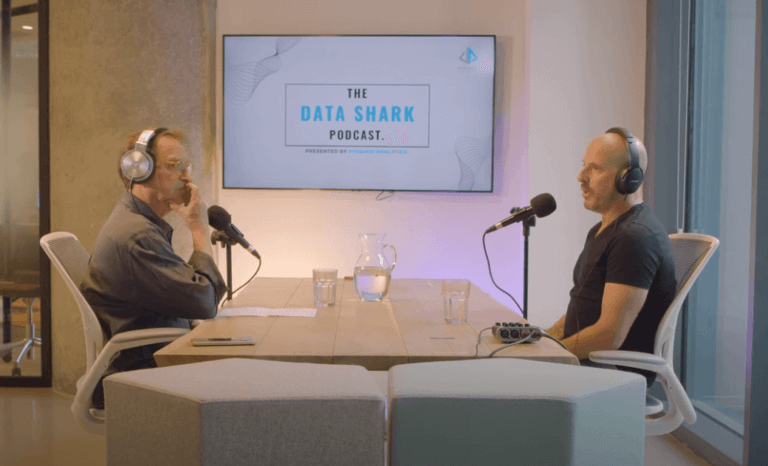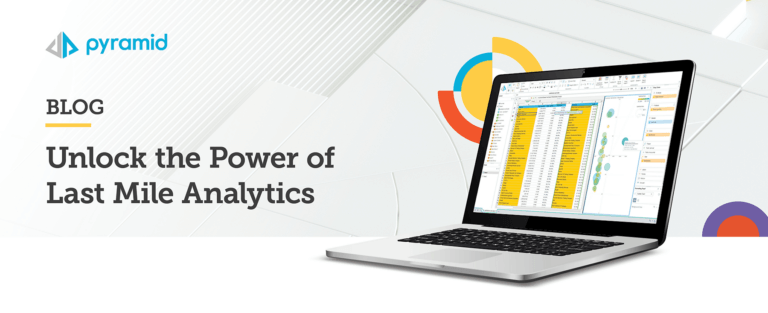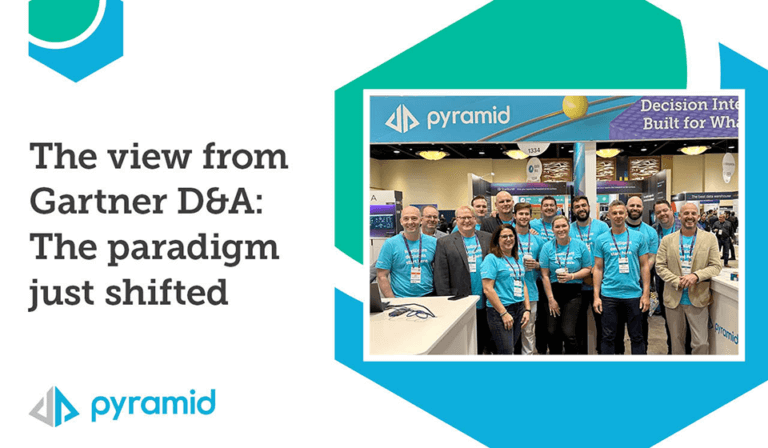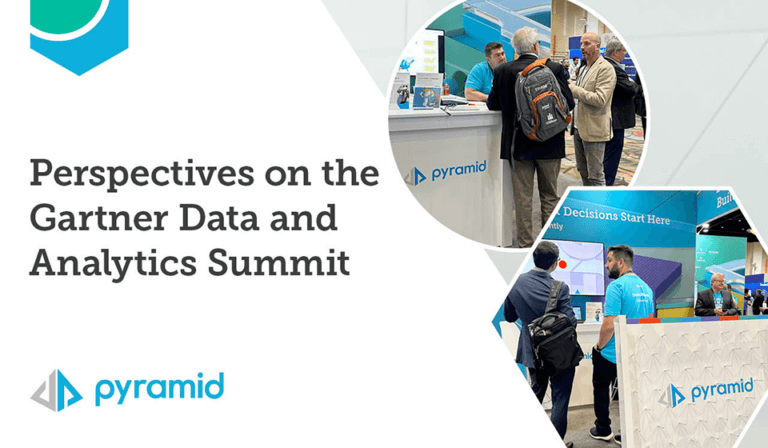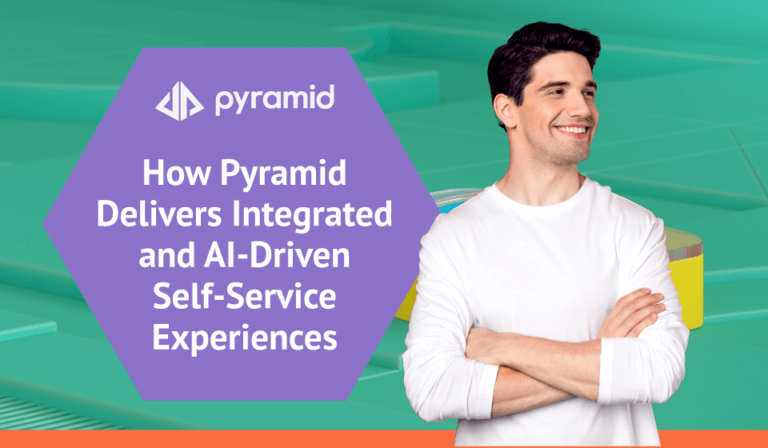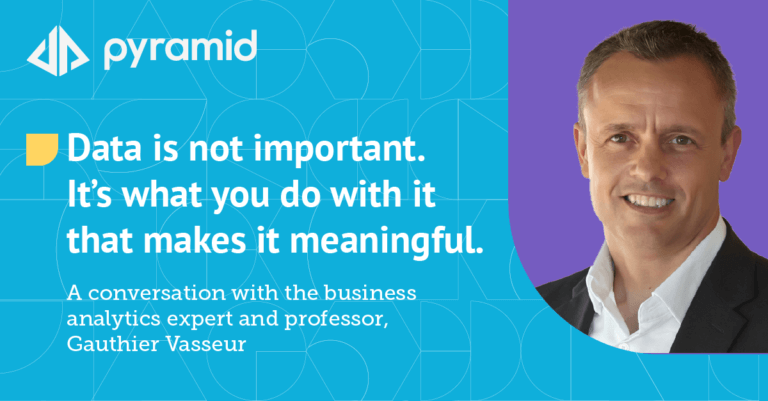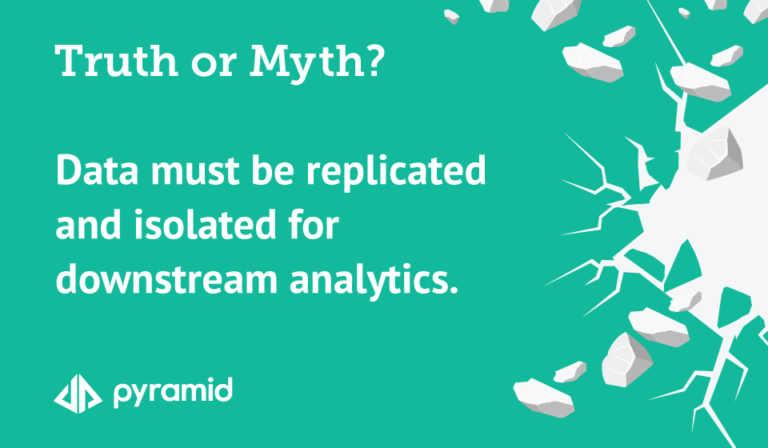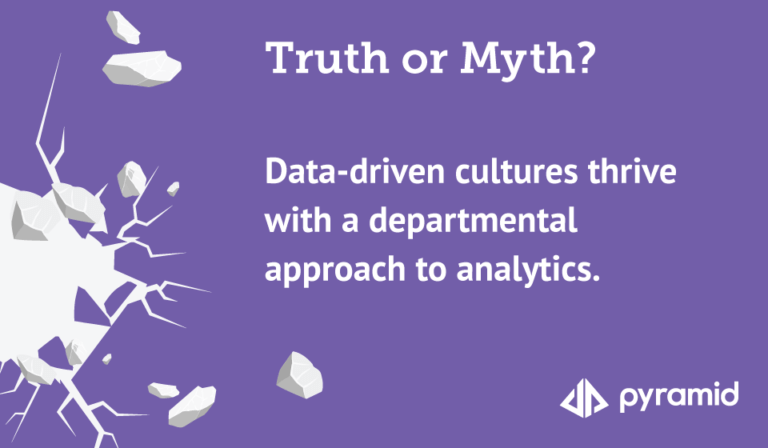The journey to analytic maturity is long and complex. CIOs worldwide prioritise investment in data analytics, and the ROI of robust data strategies is clear: a 30% year-on-year growth is enjoyed by organisations that make significant use of data to differentiate themselves in the market. And yet, organisations struggle with cultural and technological barriers when it comes to modernising data strategies and unlocking real-time analysis capability.
IT, data, and business intelligence professionals gathered on Zoom to discuss the steps to achieving analytic maturity and data excellence and how to bring teams and organisations on the journey.
Embarking on the Analytics Journey
First, we heard from Bill Balnave, VP of Global Solutions Engineering at Pyramid Analytics, who shared the story of St. Joseph’s Health. The organisation struggled with cumbersome daily flash reports that consisted of 60 pages of charts and numbers, but had no real value in terms of insight that could drive decision-making. When it came to achieving maturity for this organisation, Bill outlined the five key steps it took for them to get there:
- Someone in the leadership team urged change. Without an internal disruptor seeing the time-consuming and futile nature of the existing process, there is no catalyst for change. In this case, it was the CEO.
- They put organisational weight behind the effort to mature. Ownership within the organisation is needed to ensure the initiative is taken.
- Leadership established trust through steady evolution toward visual analysis. Making sudden changes to how data is perceived can result in trust issues; instead, maintaining the old method while steadily phasing in the new can demonstrate the data’s source and build trust from the outset.
- Different groups were onboarded properly to encourage widespread adoption for business users. Without adoption across the organisation, the investment made in the technology will never reach its full potential. Empowering these groups can also foster an environment where individuals can make suggestions to improve the process – for example, implementing automation.
- The growing excitement around the technology was harnessed. Once trust and user adoption are established, it is important to be present to take it forward.
We then heard from Ian Macdonald, Principal Technologist at Pyramid Analytics, who illustrated the concepts behind the St. Joseph’s Health case study. He discussed the four characteristics needed to achieve analytics maturity: unified, flexible, accessible, and collaborative. Moving along the maturity spectrum requires all of these approaches built into the foundations of your data strategy. Ian described the typical journey that organisations embark on toward maturity. This journey often begins with descriptive analytics, travels through diagnostic, predictive, and prescriptive analytics, and finally ends with cognitive analytics.
Maturity is achieved when data-driven insights are automated using machine learning techniques. This has many components to it, including:
- Providing a custom environment for each user individually based on their experience and business needs
- Creating the ability to annotate data and engage in a real-time conversation around the quantitative output of the analytics
- Accessibility of the data across the organisation
- As little data movement as possible
Underlining all of this is a foundation of trust in analytics to achieve data-driven success and decision-making.
Building a Collaborative and Mature Data Analytics Culture
In the discussion groups, members discussed the key barriers that they face when it comes to driving maturity in the data strategy space, how to build trust in data across the organisation, what data excellence looks like, how to relieve bottlenecks around data science teams, and how to empower business users to adopt analytics tools themselves.
When it came to the barriers to implementing effective analytics strategies, these were split into cultural and technological barriers. Major cultural issues included people or teams blocking the sharing of data outside of their own teams, a lack of desire to build data collaboration, a lack of training, and a need to lead from the top. When sharing data across teams, several members highlighted a “knowledge is power” attitude, where teams could be reluctant to share their data or techniques with the rest of the business.
Another major cultural issue is the lack of training. One member noted how frequently investment is made into different analytic technologies, but there is a reluctance to spend money on training business users to adopt the technology. This means that the technology investment can never see its full potential since user adoption and ROI are inhibited. This can be addressed by channeling investment into training and fostering a culture of making it part of your job to go on a data course.
Some major technology issues included difficulty predicting cost when moving to the cloud, the fragmentation of different technology platforms, and the difficult domain of data published on third-party platforms. When it comes to IT teams delivering centralised data repository platforms, this can often take over 12 months to deliver. Another approach to this was suggested by a member, which involved small agile teams looking at the backlog of data and continually improving the process. The key here is not to aim for perfection but continual improvement.
A widespread issue for members was the tension between centralised data warehouses owned by data/BI teams vs. decentralised user access. While many members agreed that data teams could become a bottleneck in delivering data to other parts of the organisation, other problems arise when data access is decentralised (including compromised data integrity, and the rise of data silos). The challenge for data strategists is marrying the need to empower business users to access data themselves (a self-service capability) while also ensuring a single source of truth approach and maintaining the integrity of the data.
Although there are many areas to focus on for data and IT professionals, it is clear that an approach that begins with establishing trust and empowering users will set you on the right path to analytic maturity.
Originally published at Nimbus Ninety.





